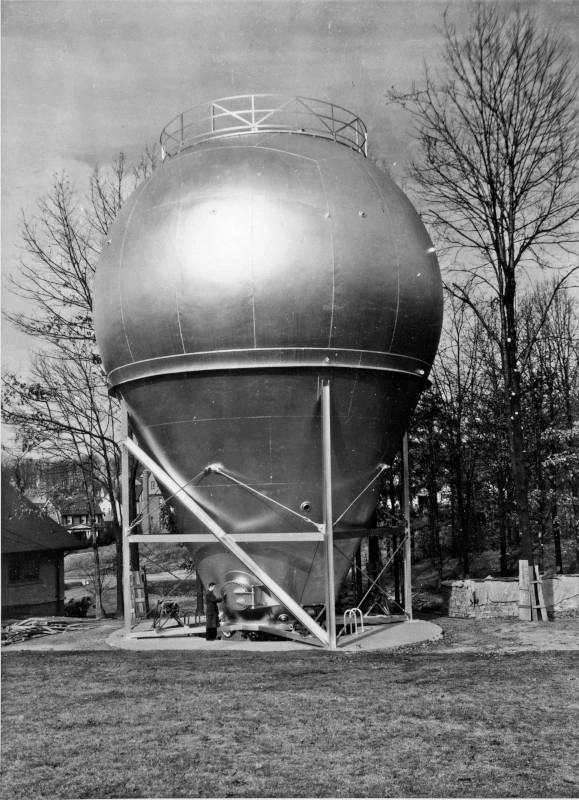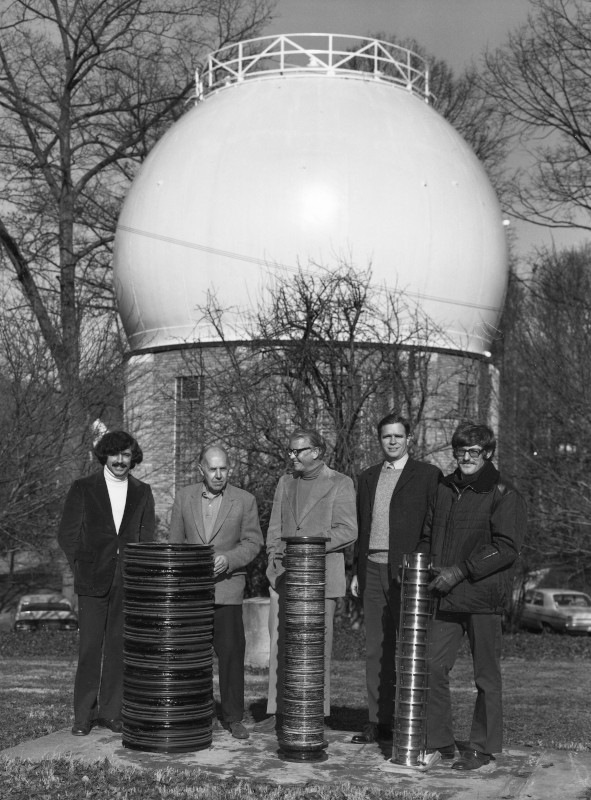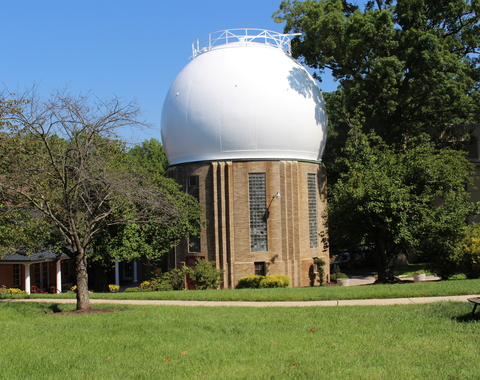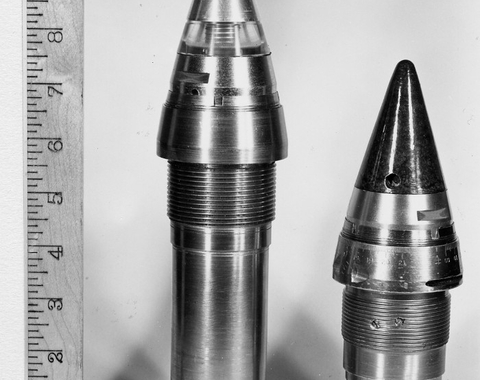In July 2017, work was completed on the sanding and repainting of the dome of the Atomic Physics Observatory (APO), a ~ 55-foot tall Art Deco structure that houses a 3 million volt particle accelerator used for a variety of studies in nuclear physics. Like a snow globe in the bright sun, the now shiny-white dome acts as a rear-view mirror, a representative of the breadth and depth of the Earth and Planets Laboratory's rich scientific past.

In 1931, the atomic physics team, which then consisted of Merle Tuve, Lawrence Hafstad, and Odd Dahl, learned of Robert Van de Graaff’s new electrostatic generator, and arranged for Van de Graaff to visit DTM to study the potential of the generator as a high-voltage accelerator. The Experiment Building (currently known as the Greenewalt Building) was expanded to house a million-volt generator, and the APO was built in 1938 to house a Van de Graaff inside a large pressure tank, which would permit even higher voltages.
The high-voltage equipment on campus was utilized for multiple significant experiments in atomic and nuclear physics. The most celebrated of these was a demonstration of uranium fission in the APO on January 28, 1939 – among the first in the United States and one conducted just six weeks after the discovery of fission by German scientists. Niels Bohr, Enrico Fermi, and other attendees of the Washington Conference on Theoretical Physics were present to witness it. After a successful second career as a polarized ion source in the ‘60s and early ‘70s, the pressure tank Van de Graaff was shut down for good in 1975.

For more information check out Louis Brown’s Centennial History of the Carnegie Institution of Washington, Volume II, The Department of Terrestrial Magnetism, Cambridge University Press, 2004.
July 24, 2017
[Edited: 11/17/22]



